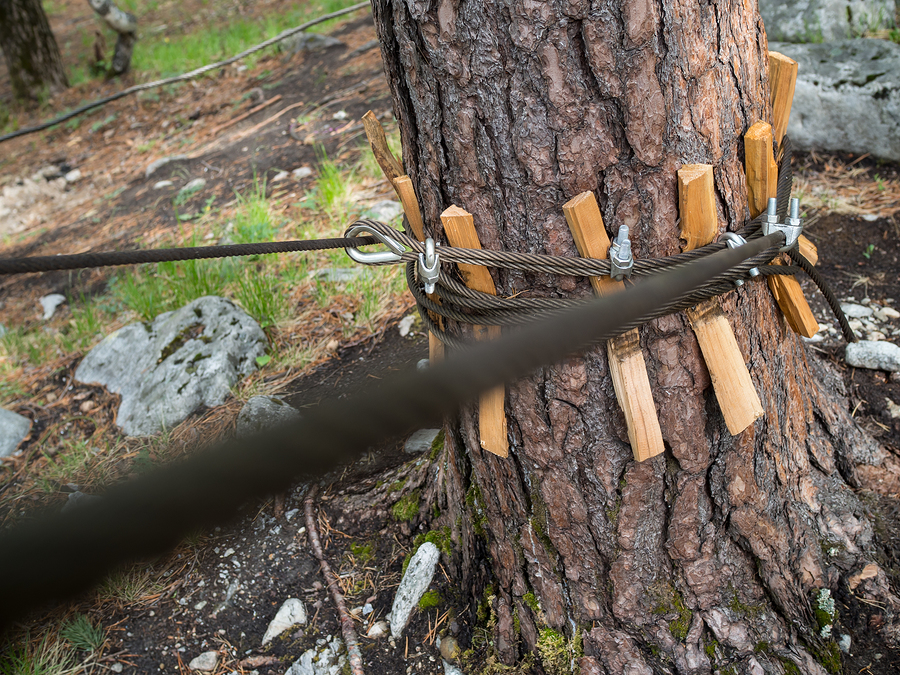Tree cabling and bracing is a common preventative maintenance tree care service that involves the installing flexible steel strand cables and steel braces in and around trees for the purpose of reducing damaged caused by stress from high winds, ice or snow weight, and heavy foliage. Continue reading to learn the basics surrounding this important year-round tree care practice, as well as, how to determine whether or not your landscaping trees need this type of professional service.

Tree Support for Preventative Measures
Basically, cabling and bracing supports weak or vulnerable trees by strengthening individual limbs and branches. This in turn increases their resilience to poor soil conditions, flooding, harsh winds, the weight of snow, ice, and animals, animal tampering, tornadoes, storms, and even tectonic changes. You will know whether or not your trees require this strategy by determining their current condition, as well as, surrounding factors like climate, seasonal weather, and nearby construction.
Trees That Benefit From Cabling and Bracing:
☑ Leaning Trees
☑ Very Old Trees
☑ Weakened or Sick Trees
☑ Dead and Dying Trees
☑ Pest Infested Trees
☑ Young or Newly-Planted Trees
Tree Staking
Tree staking is a common practice that is very similar to tree cabling and bracing, so much so, you have probably seen it many times. Staking a tree provides a similar affect in terms of support and strengthening, including promoting better root and trunk growth. However, in contrast to cabling and bracing, which uses hardware that is directly installed into branches and limbs, staking does not require invasive installation. Instead, materials are attached around and beside a tree’s outer bark, rather than inside the bark. Tree staking is best for young trees that have not yet grown hearty enough to withstand even moderate winds and storms.
A staked tree has a wood or metal pole next to it, which is attached to a cord or string tied around the tree. When staking a tree, it is vital to not stake it too high, too low, or too tight. Furthermore, tree staking can be detrimental to trees at a certain point, since trees need to exercise their resilience to wind and weather by bending and swaying. See our blog, “A Quick Guide to Tree Staking” to learn what you need to know about DIY tree staking. Otherwise, contact a licensed Fishers tree service company for professional service you can trust.
Where to Get Expert Tree Service in Fishers, Indiana
Call 317-537-9770 for professional tree care in Fishers, Indiana. We are highly trained and experienced tree care contractors that offer a wide range of residential and commercial tree services at competitive prices. We also offer tree service coupons and discounts! Call 317-537-9770 to request a free estimate for Fishers tree service, today.


